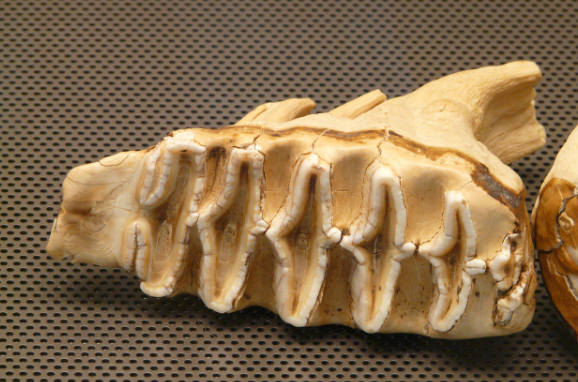Do Ticks Leave Scabs on Dogs?
What to Do If You Find a Tick on Your Dog

After your dog comes back from a walk in the woods, you might notice suspicious red spots on their skin. These are the infamous “tick bites” that so many dog owners fear, and with good reason. If left untreated, ticks can transmit bacteria, viruses, and parasites that can be harmful to your dog. The risk of contracting an infection is especially high if the tick was carrying a disease like Lyme Disease when it attached to your pooch.
Fortunately, not all ticks carry harmful diseases and most tick bites don’t cause long-term damage or leave behind any scabs on dogs. However, there are some breeds of dogs that are more likely to get sick after being bitten by a tick. There are also some steps you can take to reduce the risk of contracting an infection after your dog gets bitten by a tick in the wild.
What Are the Symptoms of Tick Bites in Dogs?
A tick bite on dogs often causes no symptoms at all. However, if your dog has been exposed to a pathogen carried by ticks, they might experience symptoms associated with that infection. Most common symptoms include:
– Swollen lymph nodes (often located under their front legs) – Lethargy – Fever – Loss of appetite – Allergic reactions (itchiness or rash, redness around the eyes, coughing) – Joint pain – Neurological issues (stiffness, stumbling, uncoordinated movement) If you notice symptoms like these after your dog has been in the woods, it’s important to take them to the vet as soon as possible.
– The vet may treat your dog with antibiotics as a precautionary measure, especially if they suspect they have been bitten by a tick. Treatment is essential if your dog has been bitten by a tick carrying a pathogen like Lyme Disease. If left untreated, these diseases can have long-term health effects, including arthritis and neurological disorders.
How to Recognize a Tick Bite
If you’re suspicious that your dog has been bitten by a tick, you can try to find it and remove it. Ticks are very small arachnids that are nearly always found on the skin. They are usually dark in color, but ticks can also be brown, grey, or even red.
The most visible part of the tick is a large bulbous structure (called the head) that is firmly attached to the skin. There are different methods for detecting tick bites in dogs.
- You can visually inspect your pooch for suspicious lumps that might be ticks.
- You can also run a comb through their fur, examining the comb to see if it has picked up any ticks. Alternatively, you can use a tick repellent that will cause ticks to detach from your dog, reducing your chances of finding one.
Tick repellents can be sprayed on your dog’s fur, or applied to their collar. They contain chemicals that repel ticks and help protect your dog from bites. Tick repellents are especially useful if you spend a lot of time in tick-infested areas.
Which Breeds Are Most at Risk?
Some breeds of dogs are more likely to get bitten by ticks than others. Some dogs are genetically predisposed to have short fur that makes them more susceptible to tick bites. These breeds include:
- – Shih Tzus
- – Basset Hounds
- – Poodles
- – Samoyeds
- – Schnauzers
- – Collies
- – Shetland Sheepdogs Most dogs, regardless of their breed, can get bitten by ticks.
However, some dogs are at increased risk of contracting an infection because of their genetic make-up. Some dogs are also more likely to have their immune systems compromised, making them less capable of fighting off infections.
This can happen for a variety of reasons, including age, certain medications, and health conditions. These dogs are also at a higher risk of getting sick from tick bites.
Ticks That Cause Disease in Dogs
Ticks can be harmful to dogs in two ways: They can transmit bacteria or viruses, and they can attach to dogs and suck their blood. There are two types of ticks that are most harmful to dogs: Deer ticks and dog ticks.
– Deer ticks are dark brown or black and are often found in bushes and shrubs. They typically bite during spring and autumn, and they can transmit diseases like Lyme Disease and Rocky Mountain Spotted Fever.
– Dog ticks are reddish orange and are more likely to attach to your dog’s skin. These ticks are parasitic and can cause discomfort but are not typically harmful to dogs.
Tips to Protect Your Dog From Ticks
The best way to protect your dog from tick bites is to prevent them from getting into the woods in the first place. You can protect your pooch by:
- – Preventing ticks from entering your home: Close the windows, keep the doors closed, and vacuum your house regularly.
- – Reducing the number of ticks around your property: Tick repellents can be applied to lawns and bushes to prevent ticks from settling around your house.
- – Engaging in tick prevention: Take your dog on regular walks, but avoid areas with high tick presence.
- – Taking your dog to the vet: If your dog gets bitten by a tick, take them to the vet. They can perform a skin exam and check for ticks.
- – Keeping an eye out for symptoms: If your dog shows symptoms of an infection, take them to the vet as soon as possible. Early treatment is often more effective, and it can also prevent the infection from spreading to other animals.
Conclusion
Ticks are often associated with forests, but they can be found in gardens, parks, and even urban areas. It’s important to be vigilant and take steps to protect your dog from ticks. Your dog’s fur can repel ticks, but ticks are small enough to find their way through loose fur.
Regular grooming can help you catch ticks before they attach to your dog. If you find a tick on your dog, remove it as soon as possible.
There are several methods of tick removal, but your best bet is to use a pair of tweezers to grasp the tick at its head, and then pull firmly. If you’re worried your dog has been bitten by a tick, take them to the vet as soon as possible.









